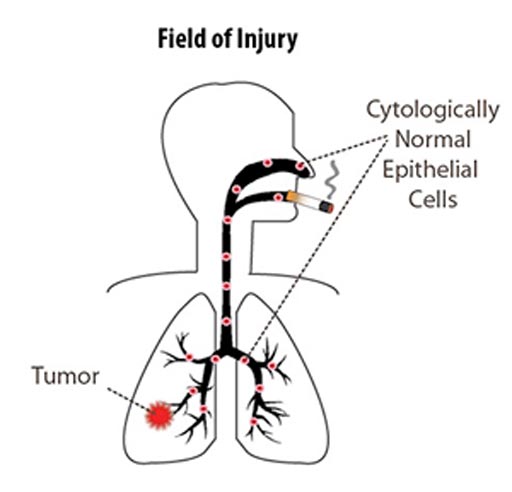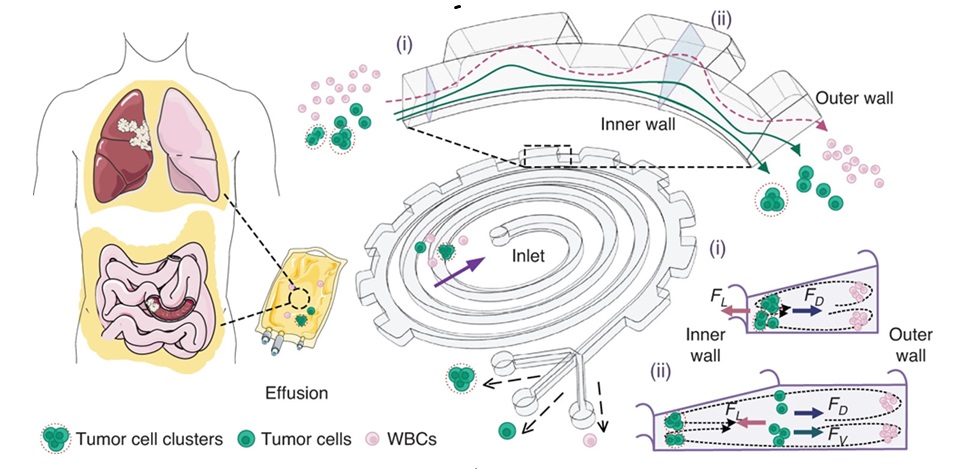Samples Reveal Gene Expression Pattern Diagnostic for Lung Cancer
By LabMedica International staff writers
Posted on 08 Mar 2017
Differences in gene expression that can be detected in nasal tissue from smokers or nonsmokers suggest that it may be possible to diagnose lung cancer from samples collected on nasal swabs.Posted on 08 Mar 2017
Investigators at Boston University Medical Center had previously derived and validated a bronchial epithelial gene expression biomarker to detect lung cancer in current and former smokers. Given that gene expression in bronchial and nasal epithelial is similarly altered by cigarette smoke exposure, they sought to determine if cancer-associated gene expression might also be detectable in the more readily accessible nasal epithelium.

Image: A diagram showing lung cancer’s “field of injury” extends well beyond the tumor. New research demonstrates genetic changes in nasal cells of patients who went on to develop lung cancer (Photo courtesy of Avrum Spira, Boston University Medical Center).
Towards this end, the investigators collected nasal epithelial brushings from current and former smokers undergoing diagnostic evaluation for pulmonary lesions suspicious for lung cancer in the Airway Epithelium Gene Expression in the Diagnosis of Lung Cancer (AEGIS) clinical trials. Gene expression was profiled using microarrays.
Results revealed that 535 genes were differentially expressed in the nasal epithelium of AEGIS patients diagnosed with lung cancer versus those with benign disease after one year of follow-up. Using bronchial gene expression data from the AEGIS patients, the investigators found statistically significant concordant cancer-associated gene expression alterations between the two airway sites. Differentially expressed genes in the nose were enriched for genes associated with the regulation of apoptosis and immune system signaling.
A nasal lung cancer classifier that combined clinical factors (age, smoking status, time since quitting, mass size) and nasal gene expression (30 genes) was statistically more significant and sensitive than a clinical-factor only model.
"Our findings clearly demonstrate the existence of a cancer-associated airway field of injury that also can be measured in nasal epithelium," said senior author Dr. Marc Lenburg, professor of medicine at Boston University Medical Center. "We find that nasal gene expression contains information about the presence of cancer that is independent of standard clinical risk factors, suggesting that nasal epithelial gene expression might aid in lung cancer detection. Moreover, the nasal samples can be collected non-invasively with little instrumentation or advanced training."
The study was published in the February 27, 2017, online edition of the Journal of the National Cancer Institute.













